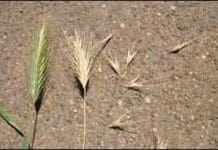Breed Profiling
I’ve liked individual dogs of pretty much every breed at some point or another. But there are times when I’ve also NOT liked dogs of some breed when it wasn’t even warranted. I guess you’d call it profiling or discrimination. For the October issue of WDJ, I needed a dog to model a number of no-pull harnesses, so I could photograph them before sending them to WDJ Training Editor Pat Miller to review them. I purchased a size “medium” in all the harnesses so that Pat would stand the best chance of finding dogs to wear and try out the products. But for the photographs, I had additional requirements of the models: they also had to be a light color and short-haired, so the harnesses could be seen easily.
How We Underestimate Our Dogs
Today my dog Boo and I visited with my ex-husband. We are good friends, with too little time to visit frequently, and Jim misses and loves Boo tremendously. Boo is a dog who doesn't vocalize much in general. When he sees Jim, he whines and howls in excitement. He jumps on him, howls and dances and groans with a great display of animation. He doesn't do this with anyone else. We haven't lived together for at least 5-6 years. Yet every time Boo sees Jim, he can hardly contain himself. When we part company after our visit, Boo doesn't want to get in the car, and he stares out the back window at Jim, howling as we leave. It breaks my heart. On the other hand, after our visit, Boo has a smile on his face, and appears to be very grateful for this visit.
A Bad Influence
Not two weeks ago, I posted a piece about the possibility that competition among the dogs in my “pack” had encouraged my dog Otto to develop previously unseen swimming and fetching skills. Here is the flip side: An un-socialized, formerly feral dog who I am fostering seems to have inspired both Otto AND Tito the Chihuahua to start chasing my cats off my property! Otto has never chased my cats. Tito has, occasionally, but he’s the same size as my cats, and if they stand their ground, he halts in mid-charge and seems to pretend that he was in the middle of something else, like trying to remember his cell phone number. But suddenly, with the arrival of a mid-sized foster dog who has no qualms about chasing the cats, both Otto and Tito have decided that the activity *is* great fun. And I’m having trouble convincing one of my kitties to come home (from the far side of my fences) at all.
Go Check Your Dog’s Collar
I feel as if I have written this story a hundred times, but it’s worth writing again: Please go check your dog’s collar RIGHT NOW and make sure that the numbers on its ID tags are current. And then, think about his microchip – he HAS an implanted identification microchip, doesn’t he? Is it currently registered with a microchip registration company? And if so, does the registry have your current contact information? A good friend lost her dog last week, and only after he went missing did she realize that his ID tag on his collar has only the number for her landline phone – long since disconnected in favor of a mobile phone.
Learning Through Competition?
My dog, Otto, has never been all that excited about fetch. Certainly not like my previous dog, a Border Collie fetchaholic named Rupert. You could make Rupert leap to his feet and run around to look for a ball if you just mimed the very first part of a throwing gesture, drawing your hand back over your shoulder. Otto will chase something if you throw it – but then he may or may not pick it up, and if he does, he is unlikely to bring it back to you. Only when the planets are aligned just so -- the fetch item is one of his favorite toys (only certain squishy balls and squeaky stuffed animals, once in a blue moon a flying disc); it’s not too hot; he hasn’t been for a run for a couple of days – will he reliably retrieve more than once or twice in a row.
Do Animals Have Free Will and “Personal Responsibility” for Their Actions?
Ages ago, I edited a horse magazine, and for a time, published a column written by the noted animal communicator Penelope Smith. I really enjoyed the opportunity to talk to Smith each month, and as we discussed the column, we’d sometimes veer off into a talk about a general topic having to do with animals and our relationships with them. Despite my preconceptions of someone who purports to “talk to the animals” as being nutty, I found Smith to be incredibly insightful, wise, and humorous. She was empathetic and yet practical. I bought several of her books on “interspecies communication” and was fascinated by her accounts of experiences with hundreds of animals.
Tattoo You!
Volunteering at my local shelter this past weekend, I was photographing a cute senior Chihuahua (in an effort to better represent him on the shelter website) when I noticed something on his tummy. At first I thought it was discolored for a health reason. But when another volunteer and I rolled him over for a closer look, I could see that he was tattooed. As we stretched him in such a way to reveal the whole tattoo, I was in the process of telling my fellow volunteer that this was once a common practice – that before identification microchips became common, dogs were sometimes tattooed with the owner’s driver’s license number or phone number. But then we decoded the message. It looked like this...
Mickey, Home At Last
In the editorial of the August issue (now online and in your mailboxes soon), I updated the story of Mickey, an-odd-but-cute looking, high-energy dog who had somehow spent almost a year at my local shelter without finding a permanent home. (He was adopted once, for a little more than two months, but was returned because the family’s original dog was picking on him unmercifully.) I first wrote about Mickey in this space in May, when I started working with him prior to an all-weekend Adopt-A-Thon. I taught him to sit – and in that one simple process, he learned to pay attention to humans, control his own behavior, and offer that “good manners” basic whenever someone paid attention to him. Unfortunately, he didn’t get adopted that weekend…or for the next two months.
Unfair to dogs!
Otto has to coexist peacefully with chickens, foster dogs, and even adolescent CATS. You can tell from his expression he's not always thrilled about the terms, but he honors the contract nonetheless.
A Good Recall
Recently we enjoyed meeting our new brother in law, and providing day care for his 4-year-old Border Collie, Sis. Arriving from northern Idaho, he was totally unprepared for the reality of traveling with a dog during a northern California heat wave. We were more than happy to offer our home and shady fenced yard to Sis so her owners could sightsee without endangering her in a hot car.
One of My Proudest Accomplishments
If I had to pick which training accomplishment I am most proud of with my dog Otto, I’d have to consider a few. He’s got a rock-solid, enthusiastic recall that I love. When we’re out on the trail and he sees a duck and ducklings on the shore of the river, say, or hears a deer crashing through the brush away from us, this recall -- combined with a strong “Off!” (a.k.a. “Leave it!”) – never fails to bring admiration from my walking partners. (And because I reward him so richly for this, with a veritable avalanche of tasty treats, it stays nice and strong.)
Foxtails are a West Coast Danger to Dogs
A friend called one day to complain about his dog’s latest vet bill: $300 to remove a foxtail that the dog sniffed up his nose on that morning’s walk. If you live on the west coast, you are likely cringing with recognition of the problem. If you live on the east coast, chances are you have no idea of what I’m talking about. Hordeum jubatum (informally called “foxtail barley” but infamous as “foxtail grass”) is a perennial plant species in the grass family Poaceae. It grows like, well, a pestilent, abundant weed all over California. When the grass is green in the spring, it’s pretty; it produces these lush heads that resemble a finer version or wheat or barley. But the moment the plants start to dry in the later part of the spring, the heads start to fall apart – and each tiny segment of the luxuriant heads becomes a danger to any dog who goes near it.












